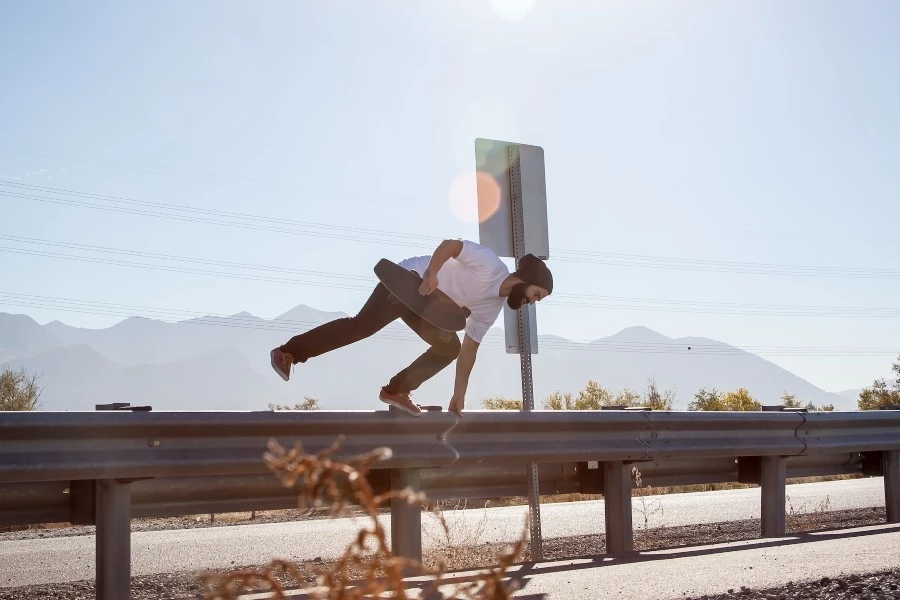A Guide To Choosing The Right Temporary Pedestrian Barrier
Share
Temporary pedestrian barriers are an essential component of construction sites, outdoor events, and other public places. They are designed to provide safety and security to pedestrians, cyclists, and motorists around the area. Choosing the right temporary pedestrian barrier can be a daunting task, especially with the wide variety of options available in the market. Whether you’re a contractor, event manager, or public official, selecting the right barrier can ensure the smooth flow of traffic, prevent accidents, and improve overall crowd control.
In this guide, we’ll walk you through the key factors you need to consider when selecting the right temporary pedestrian barrier. We’ll cover the different types of barriers available in the market, their features, and what to look for when buying or renting them. We’ll also address some of the common challenges you may face and provide practical solutions to overcome them.
1. Determine The Purpose Of The Barrier – Safety, Crowd Control, Or Site Protection.
The most common uses for these barriers are safety, crowd control, and site protection. Before making any decisions, it’s important to determine your specific needs and priorities. For instance, if safety is your main concern, you will want to choose a barrier with robust construction that provides adequate protection against vehicular traffic. Alternatively, if you are looking to control crowds, you’ll want to select barriers that are easy to install and dismantle while still being sturdy enough to prevent unwanted access. Finally, if you require temporary site protection, your focus should be on finding a barrier that can withstand harsh outdoor conditions and protect against theft or vandalism. A clear understanding of your specific needs can help you identify the right barrier and ensure your project runs safely, smoothly, and effectively.
2. Consider The Location And Terrain For The Barrier – Indoor, Outdoor, Flat, Or Uneven Surfaces.
When choosing a temporary pedestrian barrier, it is essential to consider the location and terrain on which it will be used. For instance, if you plan to use the barrier outdoors, you’ll need a durable and weather-resistant material that can withstand harsh environmental conditions. Similarly, if you intend to use the barrier on uneven surfaces, you’ll need a design that adapts to the terrain to ensure stability and safety. Alternatively, if the barrier is used indoors, you might have more options in terms of materials and design features. Ultimately, considering the location and terrain for the barrier will help you identify the right product that will meet your safety requirements and fit within your budget.
3. Evaluate The Length And Width Of The Area You Need To Block Off.
When choosing a temporary pedestrian barrier, it’s critical to evaluate the length and width of the area that needs to be blocked off. This information will help determine the number of barriers required and the correct configuration to suit the location’s specific needs. Measuring the perimeter and identifying the exact boundaries will ensure the accurate placement of the barriers and will help reduce any potential safety hazards. It’s important to have a clear understanding of the area’s size and layout to avoid any unnecessary obstructions or confusion for pedestrians. Taking the time to evaluate the dimensions of the area will result in an effective and efficient pedestrian barrier solution.
4. Choose A Barrier That Is Easy To Install And Remove, Yet Sturdy Enough To Withstand Wear And Tear.
When it comes to choosing the right temporary pedestrian barrier, the installation and removal process should be a major consideration. You want a barrier that is easy to install and remove without requiring specialized tools or expertise. However, as important as ease of installation is, you also want a barrier that is sturdy enough to withstand wear and tear. Choose a barrier that is made from durable materials like steel or aluminum that can resist bending, warping, or breaking during use. Additionally, make sure that the barrier is designed to interlock securely to make a stable and continuous chain. Opting for a barrier that meets these specifications will help ensure that your temporary pedestrian barrier is effective and reliable while maintaining a simple installation process.
5. Check Local Regulations And Safety Standards To Ensure Compliance With The Law.
When selecting a temporary pedestrian barrier for crowd control and safety purposes, it is important to check local regulations and safety standards to ensure compliance with the law. Regulations vary from city to city and state to state, and they often include certain specifications for the design and installation of temporary pedestrian barriers. For instance, some local codes may mandate a certain height, weight or stability for the barrier to meet specific safety requirements. Ignoring or overlooking these regulations could lead to fines or even legal repercussions, not to mention potential safety hazards for pedestrians. Therefore, it is crucial to do thorough research on the local regulations and safety standards before choosing a temporary pedestrian barrier. Always ask the supplier or manufacturer for documentation that verifies compliance with relevant regulations and safety standards.
In conclusion, choosing the right temporary pedestrian barrier for your project is important to ensure safety and efficiency. Take into consideration the type of project you’re working on, the site location, the unique challenges of the site, and any specific regulations you need to comply with. By selecting the right type of barrier, you can ensure that your project runs smoothly while maintaining the safety of pedestrians and workers alike.
















